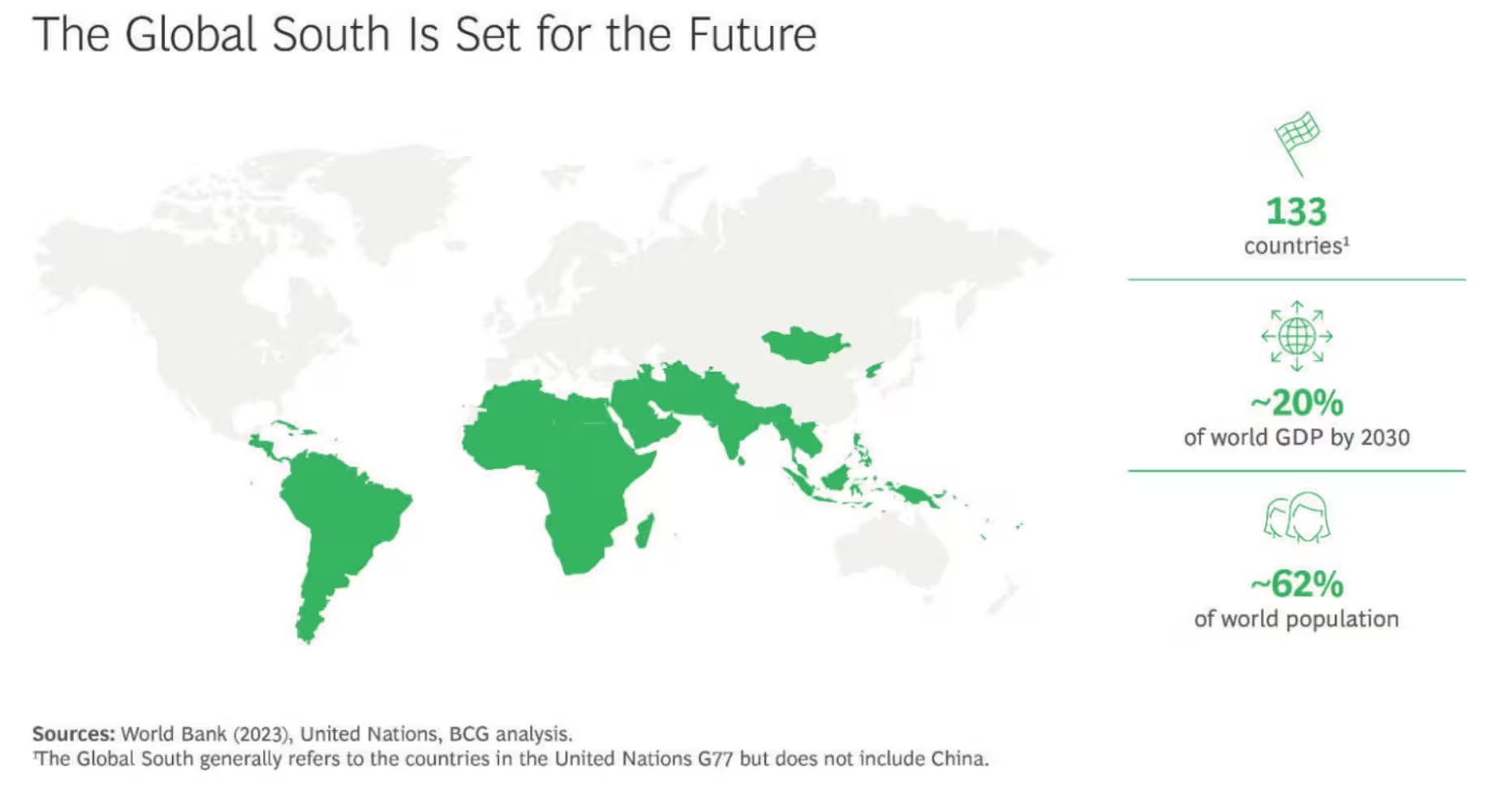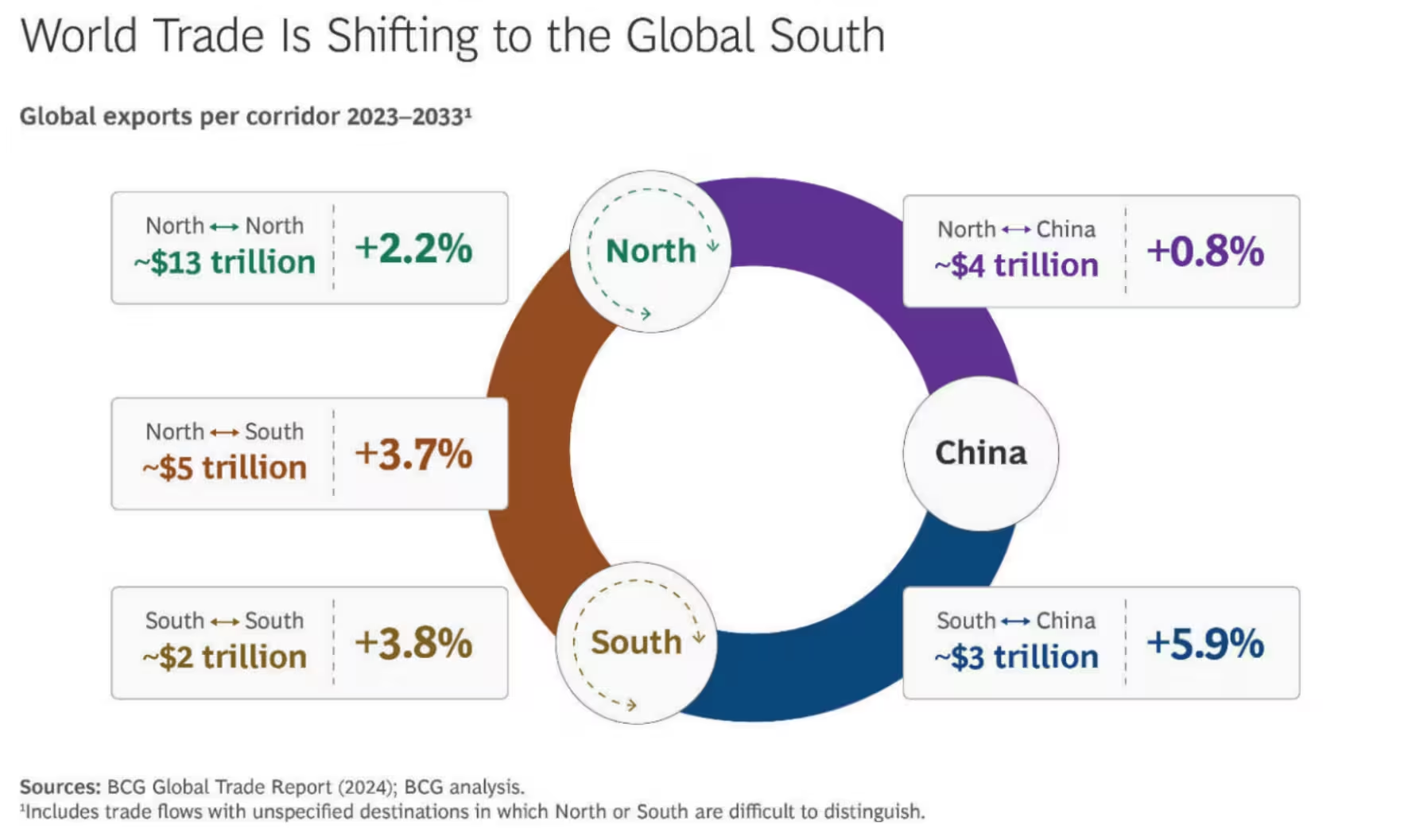Amid rising geopolitical tensions and economic realignments, more than 130 nations across the Global South—representing 62% of the world’s population—are quietly shaping a new global landscape, according to Boston Consulting Group’s latest analysis.

In its new report, "In a Multipolar World, the Global South Finds Its Moment," BCG stresses a decisive shift in global power dynamics. Far from simply “catching up,” these countries—spanning the G77 UN group excluding China—are forging an independent path, building a “third front” alongside traditional Western and Chinese spheres of influence.
The term "Global South" refers to a diverse group of nations across Asia (excluding China), Africa, Latin America, and the Middle East, often labeled as the "developing world" or "emerging markets." While lacking a formal definition, the Global South has increasingly become a powerful collective force, confidently asserting its influence in global economic and geopolitical dynamics.
Fueled by demographic momentum and rising consumption, the Global South is projected to contribute the majority of global GDP growth through 2029. According to BCG, the region’s collective GDP is expected to grow at 4.2% annually, more than double the pace of advanced economies (1.9%).
As their middle classes expand and infrastructure investments deepen, consumer spending across these countries is also projected to rise sharply, creating fertile ground for domestic and international businesses alike.

Trade patterns are also undergoing a profound transformation. Total annual trade across the Global South is forecast to reach $14 trillion by 2033. Notably, intra-regional trade—often referred to as South-South trade—is accelerating at 3.8% per year, compared with a more modest 2.2% growth in trade between advanced economies. The shift is further supported by nations like Vietnam, Thailand, and Mexico acting as key "connector economies" between China and the West.
A notable development is the growing economic collaboration between China and Global South countries. China is now the leading trading partner for 63 nations in the Global South, a significant increase from 36 in 2013. Through initiatives like the Belt and Road, China has accelerated trade and infrastructure projects, positioning itself as a central player in the region’s economic expansion. This partnership is expected to grow at an annual rate of 5.9% over the next decade.
This evolution highlights the growing importance of regional supply chains, trade blocs, and infrastructure corridors connecting emerging markets from Latin America to Africa and Asia.
Countries like India, Brazil, Indonesia, and South Africa are increasingly leveraging their positions to build multi-aligned partnerships, strengthening ties with both Western powers and China. At the same time, they are pressing ahead with development agendas that incorporate sustainability, green energy, and climate resilience—turning climate action into an economic advantage.
For companies operating within or engaging with the Global South, the message is clear: localization and resilience are key. Businesses are encouraged to:
- Develop tailored strategies that address regional needs and preferences.
- Invest in intra-South partnerships and infrastructure.
- Embrace sustainability as a source of long-term competitive advantage.
Follow Daryo's official Instagram and Twitter pages to keep current on world news.
Comments (0)